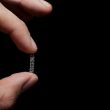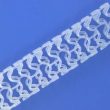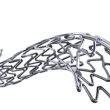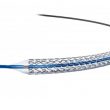This large cohort of patients treated with the dual therapy COMBO stent has showed excellent outcomes after one year (MASCOT Post Marketing Registry). Long term follow up is still ongoing. The COMBO stent is a new device with an abluminal sirolimus biodegradable polymer and a luminal layer of antibodies that promotes endothelial healing (anti CD34+)...
Biodegradable-polymer stents are as safe as permanent-polymer stents in a 5-year follow-up
Courtesy of Dr. Carlos Fava. One of the questions around drug-eluting stents (DES) is whether the development of biodegradable polymers would derive in better outcomes than the performance of durable polymers as regards the presence of events. In consequence, the COMPARE II trial was carried out with the aim of testing them in “real-world” patients. This...
COMPARE II: A randomized prospective study compared the permanent polymer everolimus-eluting stent with a biodegradable polymer biolimus coated stent.
Randomized prospective study comparing the everolimus-eluting polymer-coated stent versus a biodegradable polymer with biolimus coated stent. While the use of first generation DES effectively reduces restenosis and reintervention rates, several meta-analyzes have shown a higher rate of late events of thrombotic origin associated with inflammatory phenomena and delayed reendothelialization at the site of implantation compared...
Post DES Dual Antiplatelet Therapy Still under Debate
The NIPPON trial (Nobori Dual Antiplatelet Therapy as Appropriate Duration) was a randomized study comparing a short dual antiplatelet therapy scheme (6 months) vs. a prolonged scheme (18 months) in patients receiving the Nobori drug eluting stent (Terumo, Tokyo, Japan) with a biodegradable abluminal polymer. It included 3,773 patients with chronic stable angina or acute coronary...
Thin vs. Ultrathin Stents: 1-Year Clinical Results After IVUS/OCT-Guided Implantation
Second generation drug-eluting stents have lower frequency of thrombotic complications and in-stent restenosis. While clinical results have significantly improved, having a 2-3% annual rate of these complications within the first year after angioplasty is still worrisome. This resulted in the development of stents with struts <70 µm (ultrathin), with bioresorbable polymer and abluminal cover. Stents...
Theoretical Advantages Translated into Worst Clinical Outcomes: Synergy vs. Xience
New data from a real-world registry soon to be published in J Am Coll Cardiol Intv suggest that Synergy (a thin-strut everolimus-eluting stent with a biodegradable polymer) is associated with a higher risk of acute stent thrombosis when compared with classic Xience (a thicker-strut everolimus-eluting stent with a durable polymer). At 12 months, there was...
EuroPCR 2019 | Stent Firehawk Continues to Show Good Results at 2 Years vs. Xience
This device, an abluminal groove-filled biodegradable-polymer sirolimus-eluting stent manufactured in China, showed very similar efficacy and safety to the “gold standard” everolimus eluting Xience at 2-year follow up, according to the TARGET outcomes, presented yesterday at the EuroPCR 2019 and simultaneously published in J Am Coll Cardiol Intv. The device, which is manufactured in China...
Biolimus and Everolimus Eluting Stents in Coronary Artery Disease: Similar Safety?
Courtesy of Dr. Guillermo Migliaro. Events such as very late stent thrombosis and restenosis after first generation DES stenting were associated to the inflammatory response of site implantation. The presence of a durable or permanent polymer was thought to play a central role in said inflammatory process, which caused, among other things, delayed re-endothelialization and...
Six Month DAPT Enough for Nobori BES
Patients treated with A9 biolimus eluting stent with biodegradable polymer (Nobori, Terumo) can receive only six months of dual antiplatelet therapy (DAPT) with no increase in adverse events, compared against more prolonged treatments. The net adverse clinical and cerebrovascular events that included all cause death, MI, cerebrovascular events and major bleeding was: 1.92% for...








